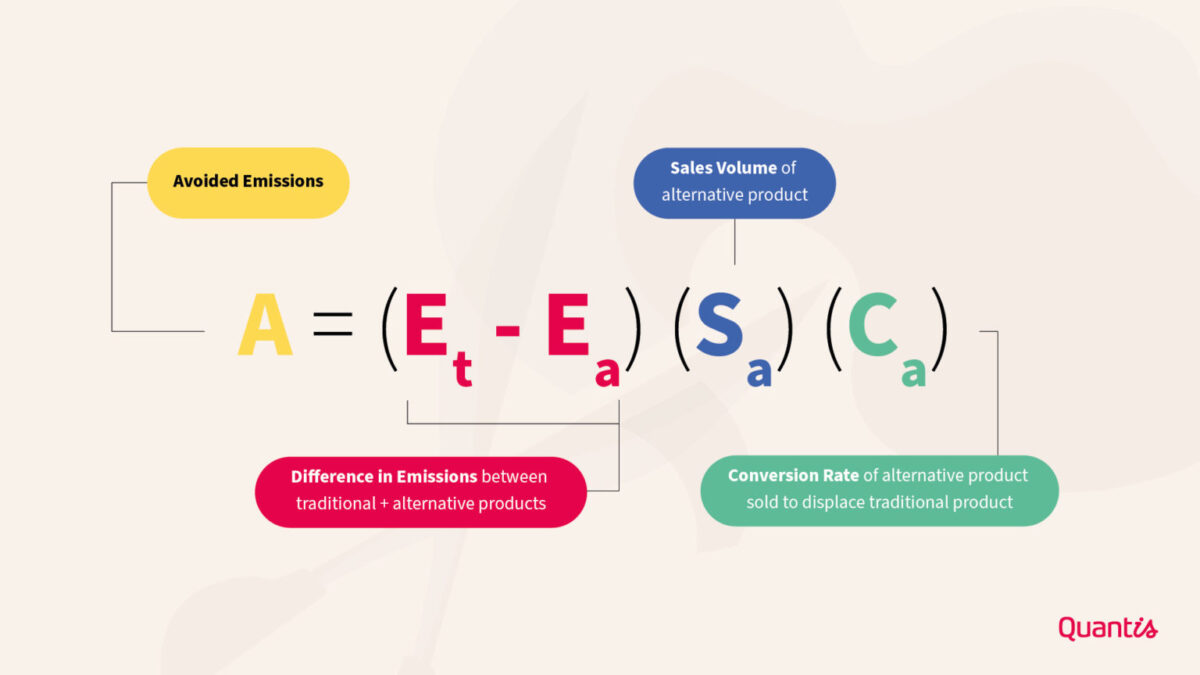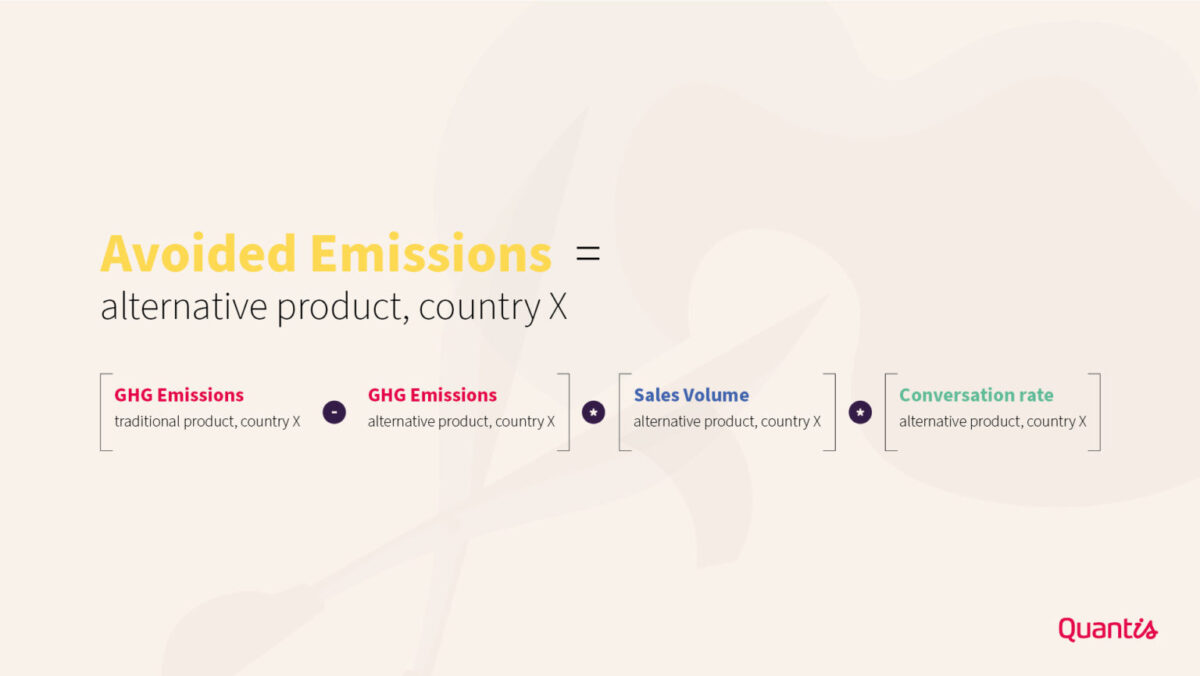In brief:
- Avoided emissions offer a way for companies to expand their climate agenda by providing the necessary information to develop and scale impactful solutions in markets with high decarbonization potential.
- Companies can leverage avoided emissions as a metric to identify opportunities to innovate, to scale solutions and to facilitate internal discussions about how to increase their contribution to societal emissions reductions.
- Simply tallying up avoided emissions isn’t enough. To serve as an effective lever to global decarbonization, companies must use avoided emissions as a tool to examine and inform their approach to growth.
- Avoided emissions don’t cancel out a company’s own emissions and therefore cannot count towards corporate carbon neutrality or net zero goals.
In the race to limit global temperature rise to 1.5˚ C, the contribution of the business community to global decarbonization has largely been framed around reducing companies’ own direct and indirect greenhouse gas (GHG) emissions. And rightly so — theIPCC has made it abundantly clear that deep, immediate reductions across all sectors are non-negotiable if we’re to ward off the worst-case scenarios of climate change. But to reach Net Zero, corporate climate action must go beyond simply “doing less harm” to encompass “doing more good.”
In addition to their own reduction efforts, companies will need to start delivering climate solutions with high decarbonizing impacts for society. The potential impact of these complementary actions is significant. Indeed, in itsAR6 Synthesis Report, the IPCC points to demand-side strategies as having the potential to cut global GHG emissions by 40–70% by 2050.
Avoided emissions offer a way for companies to expand their climate agendaby taking the broader impact to society into account and providing valuable metrics to accelerate the development and adoption of solutions with high decarbonizing potential. And it’s catching on. Already we’re seeing an increasing number of companies leverage their avoided emissions as a marker of sustainability. But the term can be hard to understand, leading to unintentional greenwashing. What does avoided emissions actually mean? And how can companies ensure that they’re using avoided emissions information in a credible way that leads to positive climate outcomes for society?
Understanding avoided emissions
Avoided emissions is a type of intervention accounting that enables companies to understand the emissions reductions occurringoutsideoftheir product’s life cycle and corporate value chain because of the use of that product (i.e., the “positive” impact on society). It’s a measure of the difference between the GHG emissions that would occur because of a traditional product’s life cycle and the GHG emissions of a lower GHG alternative product. Think plant-based milk vs. dairy milk or LED light bulbs vs. incandescent.
The focus of avoided emissions is delivering emissions reductions to society, outside of a company’s value chain, by offering products or services that drive broader behavioral and market shifts — therefore, not reducing a company’s own GHG inventory but instead displacing a GHG impact outside of their inventory. In addition to increasing its avoided emissions, some solutions may help companies reduce their own direct and indirect emissions (e.g., replacing animal products with plant-based products in their portfolio) — a win-win scenario. For companies whose products can already be considered climate solutions, such as solar panels, increased sales — and thus increased avoided emissions — will lead to an increase in a company’s own emissions. This is why it’s critical for companies to work on avoided emissions in addition to — not instead of — efforts to reduce their own emissions. To mitigate global climate change, both are required.
**Note: Avoided emissions are distinct from and therefore must be reported separately from GHG inventory footprints. Avoided emissions do not cancel out a company’s emissions and therefore should not count towards their own corporate carbon neutrality or net zero goals. See the WBCSD Guidance on Avoided Emissions for more information.**
Harnessing avoided emissions to support decision making + drive impact
Avoided emissions offer companies a powerful tool to accelerate climate action on a large scale by providing the necessary information to develop and scale impactful solutions in markets with high decarbonizing potential. What’s more, companies can leverage avoided emissions assessments to communicate about their contribution to a 1.5˚C-compatible society.
Identifying opportunities for innovation
To deliver on global and corporate climate goals (as well as those linked to other planetary boundaries, such as biodiversity and water), requires systems change. As a society, we can’t continue to produce the same products in the same way we’ve always done.
Companies can leverage avoided emissions assessments to guide business model transformation and develop solutions that deliver emissions reductions to society. For many companies, this will require diversification or transformation of their product portfolios to replace traditional products with lower-GHG alternatives. It also requires companies to target customers and consumers of certain traditional products or entire product categories, engaging them to replace traditional products with lower GHG alternatives, such as animal products with plant-based ones.
For example, by shifting its focus to reaching consumers of one or more traditional dairy products, a plant-based product company could make a greater contribution to global decarbonization by displacing GHG-intensive products from the market and replacing them with lower GHG alternatives. For reference, plant-based “dairy” products on average generate one-third of the GHG emissions of their dairy counterparts (from cows) anduse less land and water. As another example, a high efficiency appliance manufacturer could have a positive climate impact on society by displacing more traditional, less efficient appliance options, providing consumers with comparable functionality and reaching them through sales and marketing channels that traditional products occupy.
Scaling solutions
Avoided emissions can be leveraged by companies as a metric to support strategic decision making around which solutions and markets to prioritize.
For companies to increase their contribution to global decarbonization (and thus societal emissions reductions), they need to either increase displacement rates (e.g., targeting growth in specific markets or to certain consumers) or widen the emissions gap between their lower-carbon product and a traditional product. An avoided emissions assessment can help companies understand the societal impact of different solutions in different markets, and thus identify where to focus resources and efforts to generate the greatest emissions reduction potential for society. This information not only facilitates the decision-making process, but it also enables companies to maximize their contribution to global decarbonization.
Communicating impact + shifting behaviors
Avoided emissions are probably most well known for their use as an accountability tool. They create a language for companies to use internally to discuss how to increase the “benefits” of their products (i.e., their contribution to global decarbonization through the reduction of societal emissions), as well as to credibly communicate with consumers about lower-GHG solutions.
Using avoided emissions data, companies can create compelling (and substantiated) narratives about the climate impact of their solution that provide consumers with a strong rationale to choose an alternative product over a traditional product, ultimately driving the shifts in mindset and behaviors that are needed to deliver the 1.5˚C goal.
Thinking strategically about sales targets: displacement + disruption as a marker of sustainability
At face value, avoided emissions goals can be seen as sales targets: a company needs to sell more in order to avoid more. But there’s some important nuance here that a lot of companies miss, which prevents companies from making real contributions to global decarbonization.
The primary goal of avoided emissions isn’t to only add more alternative products to the market (which alone would ultimately increase global net emissions), it’s to displace GHG-intensive (traditional) products in the market. And that requires targeting growth in markets with the greatest potential for disruption and, as a result, the highest decarbonization potential. It should be noted that touting the avoided emissions of a solution that isn’t actually offsetting a traditional product’s impact amounts to greenwashing.
The primary goal of avoided emissions is to displace carbon-intensive products in the market. Promoting the avoided emissions of a solution that isn’t actually offsetting a traditional product’s impact amounts to greenwashing.
For avoided emissions assessments to serve as an effective lever for companies to contribute to global net zero goals, companies must use them as a tool to examine and inform their approach to growth. In particular, avoided emissions can help companies determine:
- Where their solution has the potential to displace the largest number of products or highest GHG impact products (e.g., markets where consumption of a GHG-intensive product is high and where lower-GHG alternatives are few)
- Which products to target for displacement (Important: Companies should prioritize products with the greatest potential for disruption, focusing on widening the difference in emissions between traditional and lower-GHG products. Counting avoided emissions while comparing a lower-GHG product with a similar lower-GHG product, such as oat milk vs. almond milk, is considered greenwashing.)
- How to reduce impact relative to a traditional product
To illustrate this point, let’s look at the example of Oatly, the world’s largest oat drink company, which has partnered with Quantis to explore the avoided emissions concept. Oatly has a plant-based portfolio of drinks, frozen desserts, gurts, spreads, etc. The gap in emissions between Oatly’s sold products (“solution”) and traditional products they displace (“reference”) is what’s avoided. To guide strategic, sustainable growth, the company is considering where to grow: in which markets will the increased presence of plant-based alternatives displace dairy production and consumption; which traditional dairy products to target for displacement; and how to further reduce the impact of its product relative to the comparable traditional dairy alternative.
In terms of where to displace traditional products to drive societal emissions reductions, Oatly has expanded its business in regions with historically high traditional dairy consumption, such as Northern Europe and North America, which offers a high potential for avoided emissions because its lower-GHG solutions have the potential to displace a significant amount of GHG-intensive products. Oatly is also expanding in regions with relatively few plant-based alternative dairy options in an effort to lead on those markets and continue to displace dairy.
It’s worth noting that the mere presence of a product (and even its sustainability credentials) isn’t enough to change hearts and minds — people have to want to buy it. To shift consumer purchasing behaviors towards lower-GHG products and effectively displace traditional products, they must be comparable or better (e.g., taste, texture, price, quality, etc.).
Avoided emissions offer companies a valuable tool for accelerating climate leadership, but businesses won’t be able to drive meaningful change if they use them as a mere marketing ploy or to solely drive sales. Companies can deliver positive impact to society if and when they use avoided emissions metrics to critically assess, inform and reshape their business models and strategies — from the products they sell to the suppliers they work with and the markets they operate in.
Is your contribution legit…or is it greenwashing? A methodology for understanding your impact
So, how can companies tell if their solution is actually leading to significant emissions reductions for society? Quantis worked with Oatly to develop a methodology that can be used to measure avoided emissions by switching from traditional dairy products to alternative plant-based products. Below, we’ve provided a high-level look at the methodology and the key elements companies need to measure to understand total avoided emissions:

Difference in emissions: To make comparable claims between two products, companies need to conduct ISO-compliant life cycle assessments (LCA), comparing the GHG emissions generated by the company’s product(s) to the GHG emissions generated by traditional products that are being displaced in the marketplace. If a product is available in multiple sales countries, it is best practice for models to be analyzed at a national level.
Sales volumes: Companies will also need to gather data on the total sales of the products they are comparing, by volume (not revenue). The volume of sales needs to be specific to the product they are analyzing and the country or countries it is being sold in.
Conversion rate: The final piece of information needed to calculate avoided emissions is the percentage of traditional products being displaced in the relevant marketplace by the lower-GHG alternative product. This can be done by surveying customers at point of sale to confirm they’re purchasing the company’s products, whether they are displacing traditional products with the company’s products, which traditional products they are displacing, and when they started replacing the traditional product with the company’s alternative products. Since purchasing behavior can be influenced by culture and customs, the survey (at least for the most material markets) must be conducted at a national level. The survey questions must include the most important alternatives and must be specific to the company’s alternative product.
For example, in the case of Oatly, the survey Question to define the conversion rate was: “What did you consume before you started using Oatly?” The consumer could choose between “Dairy milk,” “Other plant-based milk,” “Other brand oat milk,” “Other drinks such as water, juice, carbonated drinks, etc.,” and “did not use anything before e.g., drank my coffee black.” Since the “traditional product” or “reference scenario” is dairy milk and the “lower GHG alternative” or “Solution” is Oatly drinks, only the share of Oatly consumers that said they used dairy milk previously should be accounted for in calculating the conversion rate.
Therefore, to calculate avoided emissions, companies would need to multiply the 3 pieces of information above, as follows:

The process must be repeated for all products and countries a company wishes to account for in their calculations.
Following this methodology to measure avoided emissions, can unlock a new way for companies to have a meaningful impact to accelerate global decarbonization in key sectors of the economy. It can lead to a new and broader perspective on business’s role in combating climate change. And, when replicated by many companies or entire sectors, it can provide an indication of the impact of disrupting and transforming traditional economic sectors.



